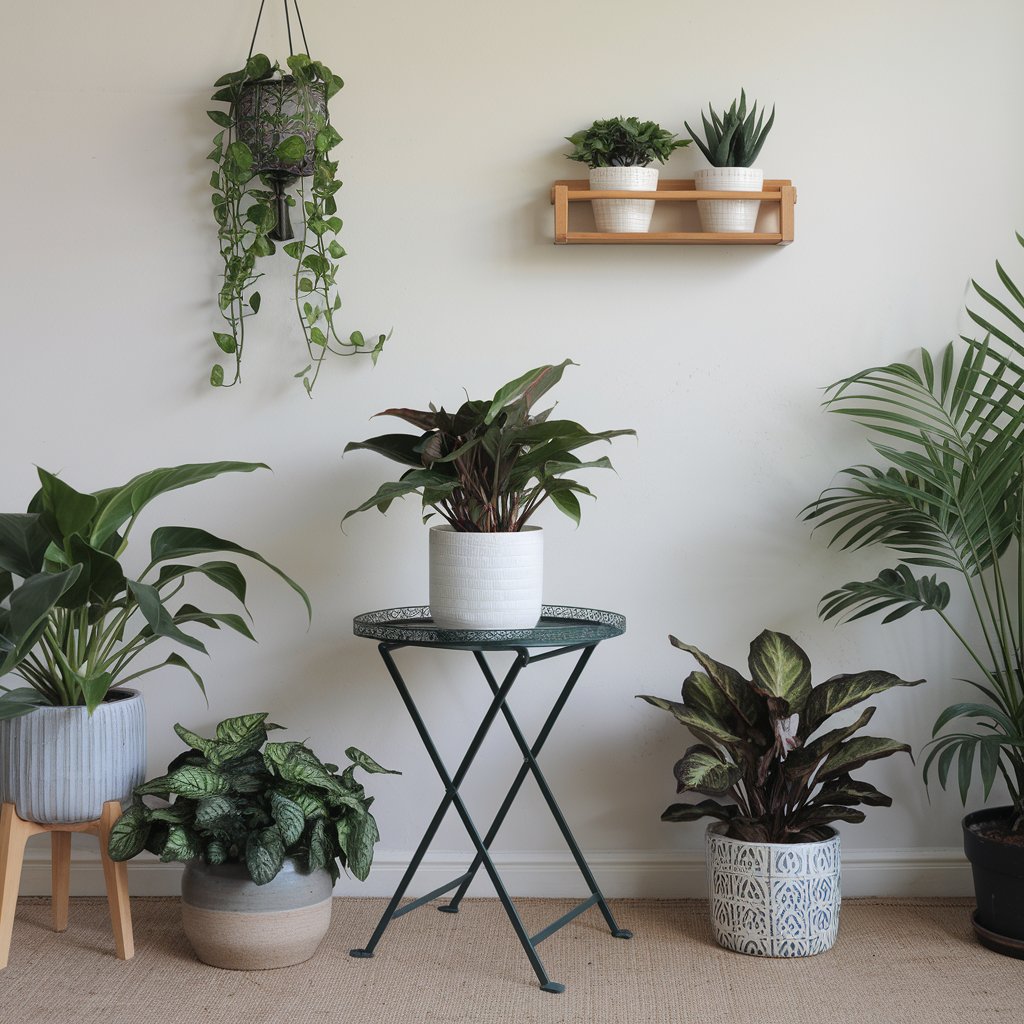If you’ve been searching for a way to bring a piece of nature into your home while adding a touch of elegance, terrarium plants are the perfect solution. These self-contained, miniature gardens are visually stunning and offer a low-maintenance way to enjoy greenery indoors. Whether you’re new to the world of terrariums or looking to perfect your technique, this guide will cover everything you need to know, from the best plants for your terrarium to tips for maintaining your indoor garden.
What Are Terrarium Plants?
Terrarium plants are small, low-maintenance plants that thrive in enclosed or partially open glass containers, known as terrariums. These plants are carefully selected to adapt to the humid, controlled environment of the terrarium, creating a miniature ecosystem that’s as functional as it is decorative.
Benefits of Terrarium Plants
Terrariums offer more than just aesthetic appeal. Here’s why they’ve become a popular indoor gardening choice:
- Low Maintenance: Terrarium plants typically require less attention, as the enclosed environment retains moisture, reducing the need for frequent watering.
- Space-Saving: Terrariums are perfect for apartments or small spaces. They bring greenery into any room without taking up much space.
- Stress Relief: Indoor plants, including terrarium plants, have been shown to reduce stress and improve mood.
- Air Quality: Many terrarium plants help purify the air, making your indoor environment healthier.
- Creative Decor: Terrariums double as decorative pieces, blending nature with artistic design.
Best Plants for Terrariums
When choosing terrarium plants, picking species that thrive in high humidity and limited space is essential. Here are some ideal options:
- Ferns
- Types: Maidenhair ferns, button ferns
- Why They’re Ideal: Ferns love the moist, humid conditions of a closed terrarium. Their delicate fronds add a lush, tropical feel.
- Moss
- Types: Sheet moss, pillow moss
- Why They’re Ideal: Moss thrives in low light and adds a carpet-like green layer to your terrarium, enhancing its natural appeal.
- Air Plants (Tillandsia)
- Best for: Open terrariums
- Why They’re Ideal: These unique plants don’t require soil, making them easy to incorporate into creative terrarium designs.
- Fittonia (Nerve Plants)
- Colors: Pink, white, or red veins on green leaves
- Why They’re Ideal: Their vibrant, patterned foliage adds a pop of color to your terrarium.
- Orchids
- Types: Miniature orchids
- Why They’re Ideal: These delicate flowers bring elegance to a terrarium, thriving in the controlled conditions of a closed setup.
- Succulents
- Examples: Jade plants, echeveria, or haworthia
- Why They’re Ideal: For open terrariums, succulents require less humidity and create a modern, sculptural look.
- Peperomia
- Types: Peperomia argyreia (Watermelon Peperomia)
- Why They’re Ideal: Compact and colorful, Peperomia plants adapt well to terrarium environments.
- Carnivorous Plants
- Examples: Venus flytraps, pitcher plants
- Why They’re Ideal: These unique plants are conversation starters and thrive in humid, enclosed terrariums.
Types of Terrariums
Not all terrariums are the same, and the type you choose will influence which plants will thrive:
- Closed Terrariums
- Best For: High-humidity plants like ferns, mosses, and nerve plants.
- Advantages: Mimics a tropical rainforest, perfect for plants needing moisture and warmth.
- Open Terrariums
- Best For: Low-humidity plants like succulents and air plants.
- Advantages: Better airflow prevents mold, ideal for modern, minimalistic designs.
- Pre-Planted Live Terrariums
- For beginners, pre-planted terrariums are ready-made ecosystems that require minimal effort to maintain.

How to Create Your Own Terrarium
Building your terrarium is an enjoyable and creative process. Follow these steps to craft your own indoor masterpiece:
- Choose the Right Container
- Options: Glass jars, fishbowls, geometric terrariums, or even DIY containers like mason jars.
- Closed containers work best for tropical plants, while open containers are ideal for succulents.
- Layer the Base
- Step 1: Add a layer of pebbles for drainage.
- Step 2: Add activated charcoal to filter the air and prevent odors.
- Step 3: Add a thin layer of sphagnum moss to keep the soil in place.
- Add Soil
- Use well-draining soil, especially if incorporating succulents or air plants.
- Select and Arrange Plants
- Arrange taller plants in the back and smaller ones in the front to create depth.
- Ensure plants have similar care requirements.
- Decorate
- Add finishing touches like decorative rocks, figurines, or pieces of driftwood for a personalized look.
- Water and Seal (if closed)
- Lightly water the soil and seal the terrarium to create a self-sustaining environment.
Caring for Terrarium Plants
Proper care ensures your terrarium plants remain vibrant and healthy:
- Light
- Place your terrarium in indirect light. Direct sunlight can overheat closed terrariums, while insufficient light can stunt growth.
- Watering
- Closed terrariums rarely need watering, while open terrariums require occasional moisture. Use a spray bottle for gentle watering.
- Pruning
- Regularly trim overgrown plants to maintain a balanced appearance. Remove dead or yellowing leaves to prevent rot.
- Cleaning
- Wipe the glass periodically to maintain a clear view of your miniature garden.
- Temperature and Humidity
- Keep your terrarium in a stable environment, away from temperature extremes.

Troubleshooting Common Terrarium Problems
- Mold Growth: Reduce humidity by opening the terrarium temporarily and avoid overwatering.
- Plant Rot: Check for waterlogged soil and remove any affected plants.
- Wilting: Ensure adequate light and proper hydration.
Why Choose Terrarium Plants?
Terrarium plants offer more than just aesthetic value. These miniature ecosystems remind us of the beauty of nature and allow us to enjoy gardening on a smaller, more manageable scale. Whether you’re a seasoned gardener or a complete beginner, terrariums are a creative way to bring life into your indoor space.
So why wait? Dive into the world of terrarium plants, and let your creativity shine while crafting your own slice of paradise.
For more tips on indoor plant care and propagation, check out Indoor gardening.




